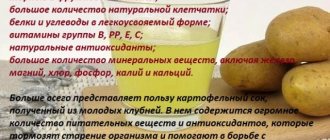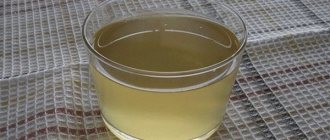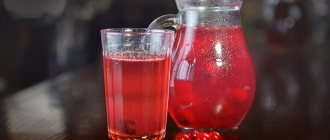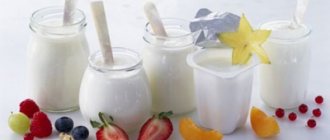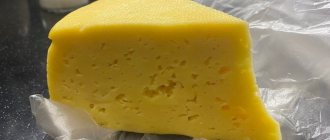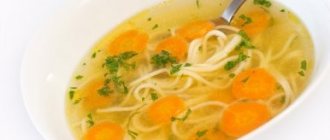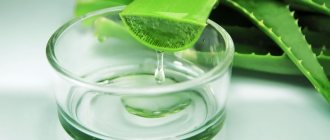general information
In case of pathologies of the mucous membrane lining the digestive tract, it is necessary to switch to a gentle diet.
It is recommended to include in the daily menu products that do not require increased production of enzymes for digestion - milk and fermented milk products. They contain easily digestible protein, create a barrier to the acidic environment, and have anti-inflammatory and anesthetic effects. It is best to purchase farm products with high fat content.
Composition of milk and beneficial properties
The healing properties of the product allow it to be used not only for food, but also for medicinal purposes.
Its composition is dominated by:
- polyunsaturated fatty acids omega-3 and omega-6, which preserve the tone of blood vessels, micromuscles, epithelium and mucosa;
- complex B, responsible for the functioning of the nervous system,
- iron, which prevents the development of anemia;
- manganese, which normalizes the production of amino acids and reduces deposits of harmful cholesterol in the lumen of blood vessels;
- zinc, involved in protein-carbohydrate metabolism.
Milk contains polyunsaturated fatty acids, iron and manganese.
Milk reduces acidity, stabilizes hormonal levels, strengthens bones, nails and teeth, prevents the degeneration of tumors into a malignant form, and participates in the construction of muscle tissue.
For ulcers, it is recommended to drink goat's milk. It has a pronounced healing effect and is better absorbed.
Goat cheese
Products made from goat milk are considered more useful. They contain more vitamins and minerals compared to cow's milk cheese. Goat cheese is considered an easily digestible product. It is distinguished by its high protein content (>20%), fat (up to 50%) and calorie content (300 kcal/100 g).
For ulcers, goat milk product is not recommended for consumption despite its undoubted nutritional value. When goat cheese ripens, a large amount of organic acids (pyruvic, lactic) are formed as a result of bacterial activity. These compounds give the cheese a characteristic tart taste, but at the same time increase the acidity of the stomach and irritate the mucous membrane. Goat milk product is very hard and may mechanically irritate the stomach.
Is it possible to have milk for stomach ulcers?
The main reason for the development of pathology is considered to be the increased activity of Helicobacter pylori bacteria.
Invading the mucous membrane, they destroy it at the cellular level with toxins produced during their life activity. The synthesis of hydrochloric acid is disrupted. Ulcers are formed with increased secretion (due to the aggressive effect of enzymes on the surface epithelium) and with decreased secretion (due to retention of the food bolus in the stomach, fermentation or putrefactive processes develop). With increased acidity, milk has a neutralizing effect. A protective film is formed on the surface of the mucosa, accelerating tissue regeneration. If it is reduced, it is better to discard this product so as not to further inhibit peristalsis.
After relief of the acute form against the background of reduced secretion of hydrochloric acid, goat milk is allowed. You can return to cow milk only during a period of remission.
Which one to choose for a stomach ulcer?
When compiling a daily menu, you need to analyze your own condition. Sometimes negative symptoms appear after eating foods that are recommended to be included in the diet due to individual intolerance. In this case, it is better to refuse them.
Type of milk
Milk from a cow is most often used, but this is not the only type of product. When treating ulcers and gastritis, traditional healers and nutritionists recommend drinking goat's milk.
Cow's milk is most often used to treat ulcers.
It is hypoallergenic, contains the natural antibiotic lysozyme, which inhibits the activity of Helicobacter pylori, and has wound-healing properties. It is better absorbed because it contains less lactose and a lot of albumin, and quickly neutralizes hydrochloric acid.
Milk also refers to plant products made from coconut pulp, soybeans, poppy seeds, pumpkin, and various types of nuts.
For gastrointestinal diseases, a more pronounced therapeutic effect is exerted by:
- Soy milk. It contains a lot of iron, magnesium, calcium, B vitamins, and folic acid. It reduces acidity, forms a protective film on the surface of the mucous membrane lining the stomach, and suppresses the activity of pathogenic bacteria.
- Coconut milk. It has antibacterial properties, reduces the load on the digestive tract. This product is an antioxidant - it isolates and removes free radicals naturally.
- Nut milk. It has a rich vitamin and mineral composition, containing easily digestible vegetable protein, a complex of essential and essential amino acids. The product improves lipid-carbohydrate metabolism, increases immunity, activates metabolic processes, stimulates the secretion of enzymes, so it can be introduced into the diet with reduced acidity.
If a peptic ulcer is in remission, it is allowed to consume condensed milk as a dessert, but only from a reliable manufacturer - if it does not contain palm oil. In case of increased acidity, it is permissible to include baked cow's milk and powdered milk in the daily menu - it reduces secretory functions.
Fat percentage
Each type of milk has its own percentage of fat content:
- for farm cows - about 3.5%;
- in goat - 3.6-6%;
- for ghee – 6%;
- for dry – 22-25%.
Each type of milk has a fat content percentage.
Stores offer cow's milk - from skim to 3.5% fat. The concentration and calorie content of plant products made at home is chosen independently. A store-bought drink made from soy contains 2.2-3.6% fat, from coconut – 17-19%.
Processed cheese
This variety is obtained by melting rennet cheeses, curd products, butter and various fillers. Inorganic salts (phosphoric and citric acid) are used as melting agents. The resulting dairy product is distinguished by its high fat content (up to 60%) and calorie content (250–300 kcal/100 g).
For erosion and stomach ulcers, both chunky and pasty products are excluded from the diet. This is due to the presence of citrates in it - citric acid salts, which irritate the mucous membrane and increase the acidity of gastric juice.
How and when to drink milk
When secretion is disrupted due to gastrointestinal pathologies, intestinal disorders occur - constipation or diarrhea. How much and when to introduce milk into the diet depends on the clinical picture.
Daily norm
If you have diarrhea due to high acidity, you should drink no more than 100 ml of the drink before bed. For constipation, you can drink up to 3 glasses - in the morning, 30 minutes before lunch and before bed. If a peptic ulcer is caused by stagnation due to low acidity, it is allowed to cook milk porridges or soups - the serving is 200-250 ml per day.
Recommended dairy products for ulcers
In case of gastrointestinal pathologies, fermented milk products replenish the body’s vitamin, mineral and energy reserves. They must be included in the diet, taking into account the clinical picture and stage of the disease.
Yogurt and sour cream
Yogurt with a fat content of up to 3.5% for peptic ulcers can be included in the menu regardless of the etiology of the disease.
It stabilizes the composition of the intestinal flora and normalizes digestion processes. It's better to prepare the product yourself. Serving per day – no more than 100 g. Sour cream normalizes digestion processes.
Sour cream neutralizes acid. In case of increased secretion, it is allowed to be introduced into the diet to relieve an exacerbation, starting with 2 tsp.
The maximum daily norm is 30 g. Do not eat sour cream in its pure form if you have a stomach ulcer. It is recommended to season soups, fruit and vegetable salads with it.
Cheese
This product can be consumed with low acidity.
It has an irritating effect on mucosal receptors and increases the production of hydrochloric acid. At the same time, milk protein (albumin) neutralizes the aggressive effects of the latter. Digestive processes are stabilized. In case of high acidity, preference should be given to Adyghe cheese - soft, fresh, with low fat content. It is often compared to pressed cottage cheese. For peptic ulcers, it can be consumed immediately after the exacerbation is eliminated: used for making sandwiches, added to salads.
Kefir and whey
For peptic ulcers with high acidity, you can drink one-day kefir, 1-2 tbsp. in a day. It's better to cook it yourself. For low acidity - 3-4 days after the date indicated on the package. The drink normalizes digestion processes, eliminates heartburn and flatulence. In case of exacerbation, it is recommended to focus on your own condition.
Kefir relieves heartburn well.
Whey is a dietary product. It increases acidity, accelerates the passage of food bolus through the intestines, weakens, and eliminates the feeling of fullness in the stomach after eating. Consuming the whey relieves belching and bad breath. With reduced fermentation, you can drink 1-2 tbsp daily.
Cottage cheese
This is a universal product for peptic ulcers. The daily norm is 200-250 g. Cottage cheese reduces the aggressive effect of hydrochloric acid on the mucous membrane, strengthens bone tissue, and normalizes heart contractions. You can eat it on its own, season it with sour cream, berries and fruits, and make casseroles, soufflés, and desserts from it. In what form to introduce the product into the daily menu is determined by your own feelings. Recommended fat content is 3.5-7.2%.
Kumis and saumal
Kumis made from mare's milk has healing properties. When fermenting, yeast, acidophilus and Bulgarian bacilli are introduced into the drink, which break down milk protein into carbon dioxide and lactic acid. Koumiss contains a lot of potassium, calcium, phosphorus, magnesium and iron, and contains a complex of vitamins B. Thanks to the peculiarities of preparation, the drink is absorbed by 95%. It has an analgesic effect, restores motor skills, removes excess fluid, increases hemoglobin production and strengthens the immune system.
Kumis has healing properties.
When planning treatment of stomach ulcers with kumis, you must consult a gastroenterologist.
You should not prescribe a drink yourself, especially if you have high acidity - if you abuse the product, the patient’s condition worsens.
Saumal is mare's milk. Its composition is close to that of breast milk and contains a rich complex of vitamins and minerals that are easily digestible. It is used to treat gastritis and peptic ulcers, regardless of the level of acidity. Drink 1 s in the morning. fresh milk, and then, when milking ends, they switch to powder milk. Saumal is both an antacid and hepatoprotective agent.
Composition and effect on the body
Kefir is produced from natural milk by fermentation with the addition of beneficial microflora.
The product with a delicate taste gently envelops the mucous membranes, does not cause excessive production of digestive juice, and stimulates the gastrointestinal tract. It has high nutritional value and is absorbed by 90% within an hour after consumption, which reduces the load on the internal organs. During the same time, natural milk is accepted only by 35%.
The drink is classified according to the following indicators:
- Fat content. Low fat (0%), fat (1-3.2%).
- Alcohol component. Strong (0.6%), weak (0.4%), healing (0.2%).
- Availability of additives. Fruit, fortified, bio (with lactobacilli), high protein, fortified.
- Age. The drink is divided into one-, two- and three-day drinks. The acidity, ethyl alcohol and carbon dioxide levels depend on the duration of aging.
Kefir contains milk proteins, fats, natural sugars, organic and polyunsaturated acids. It is a source of vitamins B, H, PP, calcium, iodine, sodium, magnesium, zinc. Calorie content depends on the degree of fat content and flavoring additives. The indicator varies from 38 to 185 kcal per 100 g.
Kefir is produced by fermentation of milk.
Beneficial features
Kefir contains lactic acid and minerals, due to which it has the following beneficial effects on the body:
- cleanses the blood, prevents the formation of cholesterol plaques;
- regulates intestinal microflora;
- strengthens the immune system;
- improves the condition of autoimmune diseases, allergies, diabetes;
- helps with chronic fatigue and sleep disturbances;
- has a mild diuretic effect;
- binds and removes toxins;
- reduces the risk of developing osteoporosis;
- prevents metabolic disorders of carbohydrates and fats.
Harm of kefir for ulcers
A fermented milk product can negatively affect your well-being in situations such as:
- Cow protein intolerance.
- Exacerbation of ulcers.
- Excessive amount of kefir. Leads to the accumulation of milk protein in the body, which disrupts the functioning of the kidneys, heart, and other systems.
- Poisoning, diarrhea, relapse of the disease when consuming low-quality, expired goods.
Kefir has a negative impact on well-being in case of poisoning.
Healthy food recipes
You won’t have to starve while following a therapeutic diet if you master the following recipes:
- Kissel. The milk is brought to a boil. Pour in starch diluted in cool water. To get a medium-thick drink, add 0.5 tbsp per 1 liter. l. Honey is used to improve the taste.
- Oatmeal. Pour milk into small flakes in a ratio of 1:4, cook until all the liquid has boiled away. Just before turning off, add a little sugar and a piece of butter.
- Milk banana dessert. A banana weighing 120 g is peeled, divided into slices, and put in the freezer to freeze. 7 g of gelatin are dissolved in 100 ml of heated milk. Puree a frozen banana with 200 ml of milk in a blender bowl, pour in gelatin in a thin stream and beat until the volume increases by 1.5 times. There is no need to cool the dessert before serving.
- Soup. Milk, diluted with water in a ratio of 5:1, is brought to a boil. Add small vermicelli or rice, boiled until half cooked. Simmer over low heat until the soup thickens and the ingredients become soft. 2 minutes before turning off add salt and sweeten. Serve with a piece of butter.
Oatmeal is a healthy dish for ulcers.
For stomach and duodenal ulcers, steamed omelettes and casseroles are allowed. All dishes are served slightly warmed. Cold or hot food worsens the condition and contributes to an increase in ulcerative defects.
Harm and contraindications
If you drink milk regularly, you should not drink more than 200-250 ml per day.
If the product appears on the menu 2-3 times a week, you need to limit yourself to 600 ml per day. Abuse can provoke the development of cancer. Contraindications for use:
- individual intolerance;
- impaired absorption of vitamins and minerals;
- increased cholesterol levels;
- obesity;
- chronic diarrhea.
A store-bought product contains preservatives; a farm product may contain antibiotics, which are used for preventive purposes.
Therefore, before purchasing, you need to make sure the quality of the milk.
Fresh cheeses
Representatives of this group are ready to eat immediately after preparation and require virtually no ripening. These include:
- Mozzarella;
- ricotta;
- Adyghe cheese;
- feta;
- feta cheese;
- Suluguni;
- mascarpone.
The high moisture content gives these a soft, paste-like consistency. They contain a high percentage of fat (about 50%). Adyghe cheese, ricotta, mozzarella and mascarpone are recommended for inclusion in the diet for stomach diseases. Cheese and feta cheese are allowed to be consumed only after preliminary soaking in water, since these varieties contain a lot of salt, which stimulates the secretion of gastric juice. Suluguni is not allowed to be used as food, regardless of the stage of the disease. The high acidity of the product and high salt content are irritating to the stomach.
Selection and storage conditions
When choosing products, you need to carefully read what is written on the packaging: processing method, fat content and storage conditions. You cannot buy a product whose expiration date is coming to an end.
When choosing products, read the information on the packaging.
When purchasing on the market, you should evaluate the color and aroma of the product. A yellowish tint and a layer of cream on the surface when settling are allowed. A bluish or greenish tint, a sour smell, heterogeneity are a sign of spoilage.
Store-bought pasteurized milk needs to be boiled and poured into a glass container. Shelf life is up to 2 weeks, the properties of the product are close to natural. It is not necessary to boil and pour ultra-pasteurized water; it can be drunk raw. The farm product also needs to be heat treated and poured into glass containers. Then it will not turn sour within 3-5 days. All types of products must be placed in the refrigerator on a shelf.

